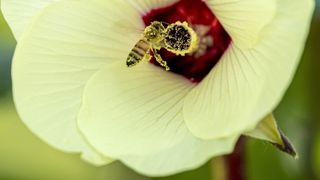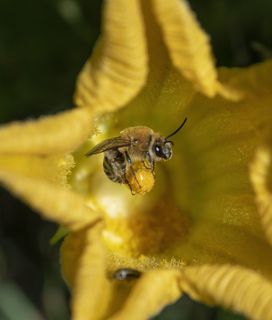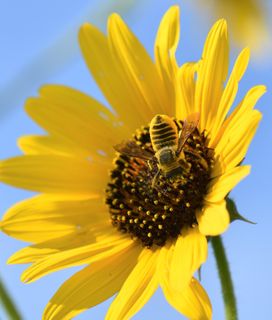POLLINATION
A VITAL ECOSYSTEM SERVICE
BEES HELP PUT FOOD ON OUR TABLES
Pollination is how plants reproduce. Between 75% and 95% of all flowering plants on earth – including 900 food crops – rely on help from pollinators. [1] While there are many insects and animals who can pollinate, bees in particular are incredibly effective at this ecosystem service.

HOW DO BEES POLLINATE PLANTS?
Bees need flowers for food, and plants depend on bees to help them reproduce via pollination. In nature, this is a prime example of a mutualistic relationship. Here’s a quick breakdown of how the process works.

WHY ARE BEES SUCH EFFECTIVE POLLINATORS?
Bees have special behaviors and physical adaptations that make them especially effective at transferring pollen between flowers.

WHAT IS BUZZ POLLINATION?
Certain plants keep their pollen stashed deep within their anthers, where it can only be dislodged by a buzz pollintor. Luckly, bumblebees and several other native bee species possess this special skill, also known as floral sonication!

HOW DO BEES IMPACT OUR FOOD SUPPLY?
Bees are responsible for pollinating nearly 1/3 of the food we eat, including about 900 food crops worldwide. They make it possible for us to enjoy countless fruits, vegetables and nuts.

HOW DO BEES IMPACT OUR ECOSYSTEMS?
Beyond our food supply, consider all the the other bee-pollinated flowers, shrubs and trees that insects and animals depend on for their everyday needs.
